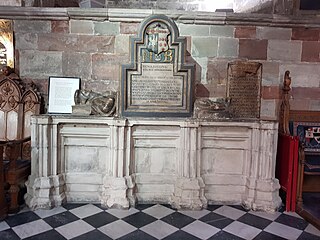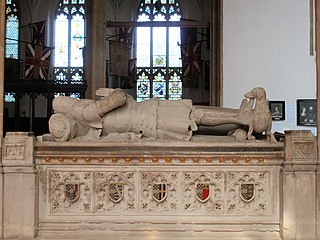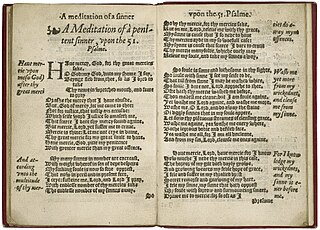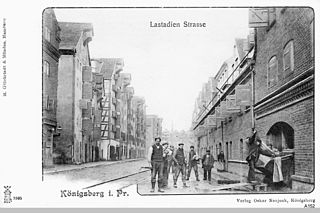Related Research Articles

Bernhard von Reesen (1491 – 1521) was a successful merchant born to a patrician family in the Hanseatic city of Danzig (Gdańsk). The Reesen name, with its prefix "von" (of), indicates that the family had its origins in the city of Rees.

Nicholas Bullingham was an English cleric who became the Bishop of Lincoln and Bishop of Worcester.

Sir Robert Drury (1456–1536) was an English knight, Lord of the Manor of Hawstead, Suffolk, and Knight of the Body to Kings Henry VII and Henry VIII. As a politician he was Knight of the Shire for Suffolk, Speaker of the House of Commons, and Privy Councillor. He was also a barrister-at-law. His London townhouse was on the site of today's Drury Lane.
Sir Robert Bell SL of Beaupré Hall, Norfolk, was a Speaker of the House of Commons (1572–1576), who served during the reign of Queen Elizabeth I.
Sir John Baldwin was an English lawyer and chief justice of the Common Pleas.

Anne Locke was an English poet, translator and Calvinist religious figure. She has been called the first English author to publish a sonnet sequence, A Meditation of a Penitent Sinner (1560), although authorship of that work has arguably been attributed to Thomas Norton.
Mary Scrope was an English courtier. She was the granddaughter of Henry Scrope, 4th Baron Scrope of Bolton, and the sister of Elizabeth Scrope, wife of John de Vere, 13th Earl of Oxford, and Margaret Scrope, wife of Edmund de la Pole, 3rd Duke of Suffolk. She is said to have been in the service at court of King Henry VIII's first four wives. As the wife of Sir William Kingston, Constable of the Tower of London, she was in attendance on Anne Boleyn during the Queen's brief imprisonment in the Tower in May 1536, and both she and her husband were among those who walked with the Queen to the scaffold. By her first husband, Edward Jerningham, she was the mother of Sir Henry Jerningham, whose support helped to place Queen Mary I on the throne of England in 1553, and who became one of Queen Mary's most favoured courtiers.

Sir Edmund Walsingham of Scadbury Hall, Chislehurst in Kent, was a soldier, Member of Parliament, and Lieutenant of the Tower of London during the reign of King Henry VIII.
William Bavand was an English lawyer and translator. He is chiefly remembered as the translator of Johannes Ferrarius’s The Good Ordering of a Commonweal (1559).

Countess Elisabeth of Nassau-Siegen, German: Elisabeth Gräfin von Nassau-Siegen, official titles: Gräfin zu Nassau, Vianden und Diez, was a countess from the House of Nassau-Siegen, a cadet branch of the Ottonian Line of the House of Nassau, and through marriage Countess of Wied.
William Lewin or Lewyn of London and Otterden, Kent, was a college fellow, tutor, ecclesiastical lawyer, and judge. He also served three times as a member of parliament for Rochester.

Laak was a quarter of western Königsberg, Germany. Its territory is now part of Kaliningrad, Russia.

Paradeplatz, also known as the Königsgarten, was a park in Königsberg, Germany.
Henry Barley or Barlee, of Albury, Hertfordshire, was a Member of Parliament during the Tudor period.
Joan or Jane Wilkinson (d.1556) was silkwoman to Anne Boleyn and Lady Lisle and a Protestant reformer. She was a friend of other leading reformers, including Bishops John Hooper and Hugh Latimer. During the reign of Mary I, she became a religious exile, and died at Frankfurt in 1556.
Sir William Browne served as Master of the Worshipful Company of Mercers from 1507 to 1514, and as alderman, auditor, Sheriff and Lord Mayor of London. He died in office on 3 June 1514 while serving his term as Lord Mayor.
Anthony Carleton was a landowner and Member of Parliament, and the father of Dudley Carleton, 1st Viscount Dorchester.

The Schwarzwald family was a wealthy, patrician, merchant family living in the Hanseatic city of Danzig from the 15th to the 18th century. The family, which had its origins in the Black Forest in south-west Germany, can be traced back to Georg von Schwarzwald, who settled in Danzig in the early 1400s.

Portrait Miniature of Hans Schwarzwaldt is a watercolour on vellum portrait completed in around 1535–1540 by German artist and printmaker, Hans Holbein the Younger. The painting shows a young man against a clear blue background. Only the head and shoulders are shown, turned three-quarters to the viewer's right, the eyes cast down. The light brown hair is close cropped, and the sitter is wearing a brown doublet, trimmed with black, with a small, open falling collar with white strings attached. There is no inscription. The subject of this portrait was identified as a Danzig merchant, Hans Schwarzwaldt (1513-1575), based on a very strong resemblance to another portrait made by Holbein in 1543, but his age does not match the inscription. It has been suggested that the young man might be Gregory Cromwell, 1st Baron Cromwell, the son of Henry VIII's chief minister, Thomas Cromwell, 1st Earl of Essex.

Portrait of Johann von Schwarzwaldt is a tempera on parchment portrait completed in 1543 by German artist and printmaker, Hans Holbein the Younger. The painting shows a young man against a blue background, turned three-quarters to the viewer's right. The sitter is wearing a deep black velvet cap and a black silk gown, a shade lighter, with a finely embroidered white shirt showing at the neck and wrist. The eyes are lowered, half covered by the lids, the arms folded. He has two rings on his left hand and is holding leather gloves. There is a flanking inscription at head height —· ANNO · ETATIS // SVÆ · 24 · 1543· — indicating that he was born about 1519. The subject of this portrait was identified as a Danzig merchant, Hans (Johann) von Schwarzwald, but his age does not match the inscription. It has been suggested that the young man might be Gregory Cromwell, 1st Baron Cromwell, the son of Henry VIII's chief minister, Thomas Cromwell, 1st Earl of Essex.
References
- Alhiyari, Ibrahim (2006). Thomas Watson: New Biographical Evidence and His Translation of Antigone (PhD). Texas Tech University. hdl:2346/8391.
- Baddeley, John James (1900). The Aldermen of Cripplegate Ward: From A.D. 1276 to A.D. 1900; Together with Some Account of the Office of Alderman. London: Printed for private distribution. OCLC 216906961.
- Chambers, E. K. (1936). Sir Henry Lee: An Elizabethan Portrait. Oxford: The Clarendon Press. OCLC 748493.
- Fischer, Thomas Alfred (1903). The Scots in Eastern and Western Prussia: A Sequel to "The Scots in Germany: A Contribution towards the History of the Scot Abroad". Edinburgh: Otto Schulze. OCLC 1084860883.
- Fry, G. S., ed. (1896). "Inquisitions: 2 Elizabeth I (1559-60)". Abstracts of Inquisitiones Post Mortem For the City of London: Part 1. London: British Record Society. pp. 191-211. British History Online . Retrieved 6 September 2022.
- Fudge, John D. (2006). "Documents". The Mariner's Mirror. 92 (2): 204–220. doi:10.1080/00253359.2006.10656994. S2CID 220330105.(subscription required)
- Gosse, Edmund (1911). . In Chisholm, Hugh (ed.). Encyclopædia Britannica . Vol. 28 (11th ed.). Cambridge University Press. p. 413.
- Lee, Sidney (1899). . In Lee, Sidney (ed.). Dictionary of National Biography . Vol. 60. London: Smith, Elder & Co. pp. 34–37.
- Lloyd, T. H. (1991). England and the German Hanse 1157-1611: A Study of Their Trade and Commercial Diplomacy. Cambridge: Cambridge University Press. p. 290. ISBN 9780521404426.
- "Rhesen". Genealogische Tafeln zu Familien aus Danzig sowie aus Westpreußen und Hinterpommern. Verein für Familienforschung in Ost- und Westpreußen. 2020.(in German)
- "Schwartzwald". Genealogische Tafeln zu Familien aus Danzig sowie aus Westpreußen und Hinterpommern. Verein für Familienforschung in Ost- und Westpreußen. 2020.(in German)
- "The National Archives: PROB 11/43, ff. 26-7 (Will of William Watson)" (PDF). The Oxford Authorship Site. Transcribed by Nina Green. Retrieved 26 October 2022.
- "The National Archives PROB 11/43, ff. 26-7 (Will of Anne Watson)" (PDF). The Oxford Authorship Site. Transcribed by Nina Green. Retrieved 26 October 2022.
- "Watson". Genealogische Tafeln zu Familien aus Danzig sowie aus Westpreußen und Hinterpommern. Verein für Familienforschung in Ost- und Westpreußen. 2020.(in German)
- Weichbrodt, Dorothea (1986). Patrizier, Bürger, Einwohner Der Freien Und Hansestadt Danzig in Stamm- Und Namentafeln Vom 14.-18. Jahrhundert. Bd. 1. Klausdorf/Schwentine: Rosenberg. OCLC 180573477.(in German)
- Zins, Henryk (1972). England and the Baltic in the Elizabethan Era. Translated by H. C. Stevens. Manchester: Manchester University Press. ISBN 0719004713.